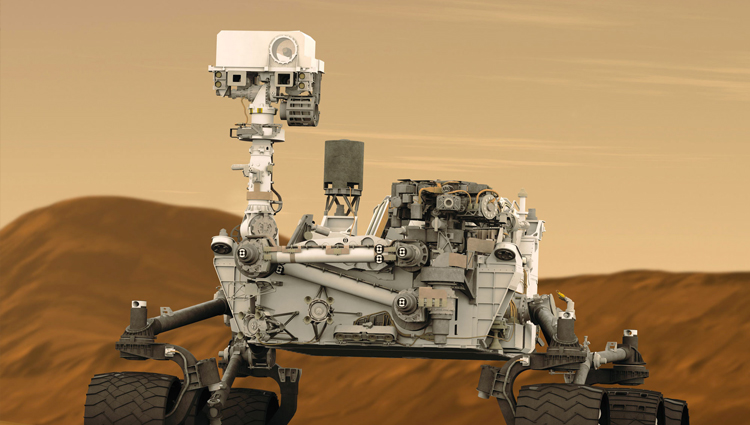Homing In On Landing Site For New Mars Rover
NASA's new Curiosity rover mission will assess odds for life in one of four promising locations on Mars.
Image

Media credits
(ISNS) -- NASA's new Mars probe, a $2.5 billion, nuclear-powered rover the size of a small car, is at the Florida launch site being prepared for its nine-month journey to the red planet, with one key issue still unresolved -- where to land.
The Mars Science Laboratory, nicknamed Curiosity, will delve deeper than any previous science mission to answer the age-old question about whether there is life beyond Earth. The goal of the project is to determine if the region where Curiosity lands has or ever had the right conditions to support microbial life.
Scientists spent years poring over pictures and analyzing chemical data collected by a fleet of robotic spacecraft circling Mars before narrowing down the options to four finalists: Eberswalde Crater, Mawrth Vallis, Holden Crater and Gale Crater.
"Each site has things that make it good and things that make it not quite so good," said planetary scientist Matt Golombek, with NASA's Jet Propulsion Laboratory in Pasadena, Calif. "It's kind of hard to select because it boils down to which kind of science is important to you, and that's almost personal."
The rover will touch down within a 12.4-by-15.5 mile targeted area, a relatively small patch of real estate for interplanetary travel. NASA's 1997 Mars Pathfinder lander, by comparison, had a landing target that was 200-300 kilometers long.
Being able to make a precision touchdown hasn't made things easy for scientists tapped to choose Curiosity's landing spot. In the past, lots of scientifically interesting sites were eliminated because of concerns the spacecraft wouldn't be able to make a safe landing.
"Certain sites could never have been considered before," said NASA Jet Propulsion Laboratory spokesman Guy Webster.
"That really helped narrow things down," added Golombek.
Eberswalde Crater stands out among the four contenders because of a single, stunning geologic feature -- a delta, believed to be a buildup of sediment left by flowing water.
"If you want a site that probably has the highest chance of preserving organics and biosignatures that might have existed, this is the place," Golombek said. "It's just a spectacular example where water came and built up a sediment."
Finding ancient Mars life is not the goal of the mission, but if there are any organics present, Curiosity, which has 10 science instruments, has the tools to make the detection.
"That would be pretty amazing," Golombek said.
The tantalizing Eberswalde site, however, has a serious drawback as well. If its deposits turn out to be nothing more than clay-dusted rocks, the mission would be largely a bust.
The next candidate site, Mawrth Vallis, is an open book of Martian history, with exposed valley walls that date back about 3.7 billion years, nearly as old as the planet itself.
"There's this stack hundreds of meters thick, with exposed sedimentary rocket and lots of clay minerals," Golombek said.
The clays, known as phyllosilicates, form in the presence of water, believed to be a necessary ingredient for life.
Mawrth's short-coming is that scientists don't understand how it formed. Water that once flowed in the valley could have been far too acidic for life to flourish.
"Certain places with water are more conducive to having all the things you need for life than others," Golombek said.
Rounding out the finalists' list are two huge craters, Holden and Gale.
The rim of the 93-mile wide Holden Crater is shot with gullies, some of which tail off into fan-shaped deposits that were once covered in water. The crater also has ancient stew of rocks known as breccia, fragments that have tumbled, broken and then cemented together by landslide, flashflood, meteorite impact or other sudden, high-energy event. Holden's breccia date back to the planet's earliest years, a time when the planet was wetter and possibly suited for life.
Gale Crater's outstanding feature is a mound of debris rising about 3 miles above the crater floor -- twice as tall as the stack of rocks exposed in the Grand Canyon. Its layered deposits include both clays and sulfates, the only site among the four contenders that have both types of material available. Scientists don't know how the mound formed, but it may be the eroded remnant of sediment that once completely filled the crater.
A decision about where Curiosity will end up is expected in July. Curiosity is scheduled to be launched Nov. 25 from Cape Canaveral Air Force Station in Florida and arrive at Mars in August 2012.
